#technocratic union
Explore tagged Tumblr posts
Text
This amuses me

#mage the ascension#vampire the masquerade#werewolf the apocalypse#society of ether#technocratic union#changeling the dreaming#ttrpg stuff#hunter the reckoning#order of hermes#world of darkness#ttrpg memes#meme#fandom nonsense#funny#words words words#english
56 notes
·
View notes
Text
My favorite magic system from a game I haven't actually played is from Mage: the Ascension. It kind of fits as both a hard magic system and a soft magic system at the same time because there are some hard rules, but its mostly very open. To become a mage you have to realize that reality is not what it seems. In MtA, reality is whatever the majority of people believe it is, known as the consensus. The consensus in modern days is pretty uniform everywhere, with small variations based on where you are, but it used to be wildly different based on the cultural beliefs of the local people. A mage is a person who realizes that the consensus isn't true reality and gains to power to act outside of its rules. Any given mage's abilities come from their own personal view of reality, known as their paradigm. A mage's magic can do basically anything, as long as it is accounted for in their paradigm. So a mage who's paradigm includes the classic Aristotelian elements can perform magic based on that, but if their paradigm doesn't include animistic spirits then they can't commune with those spirits even though other mages could based on their own paradigm. The problem with this is that the consensus doesn't like it when you go around breaking its rules and will punish mages by slapping them with an effect called paradox. Paradox can be anything from a spell failing to getting shunted into your own personal pocket universe. Nothing generates paradox like being seen doing magic by sleepers (people who are not mages and still live fully within the consensus). Most mages either only use magic around other mages or, if they need to cast around sleepers, will disguise their magic as a mundane effect. Someone throwing a fireball from their hands will generate major paradox because the consensus is that people can't do that. However if a mage holds a lighter up to a spraycan before casting their fireball, the sleepers can rationalize it as something that exists within the consensus and not as much paradox will be generated.
In the dark ages, magic was part of the consensus and mages could openly rule over the sleepers because everyone believed in magic and therefore magic was part of the consensus. In response to the tyranny of the mages, a group was formed called the League of Reason, who wanted to introduce a new form of magic to the consensus that everyone could use. This form of magic was based on logic and reason and was called science. This led to the ascension war, where the League of reason sought to remove magic and superstition from the consensus and a very loose coalition of mages called the Council of Nine Mystic Traditions want to keep magic in the consensus. And the League of Reason won. A mostly rationalistic, scientific worldview has become the consensus worldwide, forcing the Council into operating underground. The League of Reason has become the Technocracy, a worldwide secret organization ruling the world from the shadows and trying to stamp out magic and any other form of "reality deviants" to keep humanity safe, even if they have to suppress basic human imagination to do so. Notably, the earliest books for the game very much said "Traditions good, Technocracy bad", but later books went for a much more grey approach to the conflict between them, making it clear that both sides really are doing what they think is in humanity's best interest even if their ideas for how to do so are fundamentally incompatible.
What's really interesting is that science and technology really are a form of magic and technocrats are mages, even if the Technocracy would vehemently deny this. Technology is a form of magic that everyone can use because its part of the consensus and science doesn't discover new facts about the world, It creates those facts and applies them to the world. The Technocracy's super-advanced technology creates paradox just as much as magic does because personal anti-gravity suits and mass-produced clones violate the consensus just like throwing around fireballs and conjuring demons does.
Mage: the Ascension is a super fun setting because just about any fantasy or sci-fi trope can exist here. Classic pointy hat and wand wizards can battle cyborgs armed with self-replicating nanotechnology. Anti-authoritarian punks can hack your wallpaper to spy on you because they believe all reality is part of a unified mathematical whole that the internet gives us access to. A group of spacefarers can ride the luminiferous aether to mars only to encounter Aztec shamans who asked the spirits to carry them there thousands of years ago. A powerful mage can create a time loop by convincing their younger self to obtain enlightenment through the power of sex, drugs, and rock and roll. Two people can have an argument over whether the guy they just met was an alien from Alpha Centauri or an elf from the Norse nine realms and both of them can be right. Animistic spirit-callers can upload themselves to the internet to combat spirits of malware. And an angry mage might just teleport you into the sun because they believe distance is just an illusion and therefore have the power to make anything go anywhere with a thought. It's a wild ride.
#mage the ascension#tabletop games#ttrpg#world of darkness#old world of darkness#magic system#mage#fantasy#science fiction#technocracy#technocratic union#council of nine mystic traditions#lore
266 notes
·
View notes
Text
Today I bring you a self-indulgent "Mage: the Ascension" shitpost 😌

Rezul is a former NWO agent who has changed sides and is now with the Cult of Ecstasy. He tries to hide his past from his new allies. Keyword is "tries", because he was born in a family of two technocrats, he had been brainwashed from birth, and he does a very poor job at pretending to be a normal person. Even by mages' standards. Even out of life-threatening situations like the one I've depicted on the picture, he's weird. Like, "clearly was a part of totalitarian organisation once" weird.
Most of other ecstatics he's familiar with have figured him out by now, but they don't say anything, because it's funnier when he slips, realises it, checks for reaction, doesn't get any and is immensely relieved (all technocrat-style, without really emoting with his face). Like dude, you're not fooling anyone, sorry. But if this is so important to you, we'll play along.
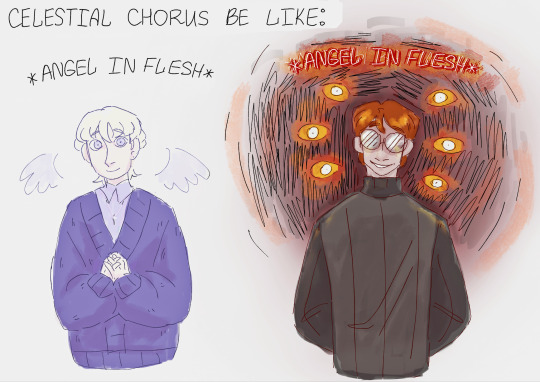
I love Celestial chorus. Here are my choristers with very different vibes and ways of living by their religion. That's it. Moving on.
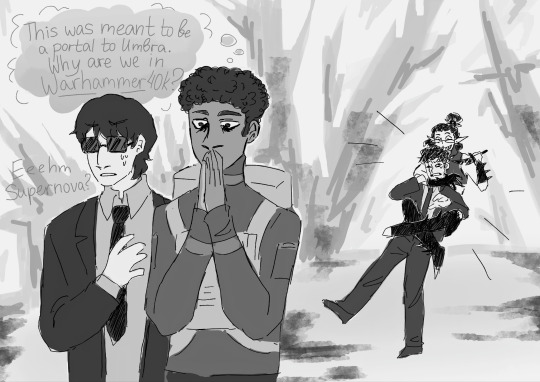
I got tired of colouring 😔
Bullying technocrats yay. Personal headcanon of mine: if NWO bases it's dark humour on 1984, then ItX should do so on "I have no mouth and I must scream", and Void Engineers should do so on Warhammer 40k. At least my VE, Supernova, does answer his colleagues' complaints about their lives with "well, at least we're not in Wh40k" from time to time.
(And yeah, they are in Commorragh and there's a drukhari with glasses in the background. Don't worry, they'll get out of there very soon once Supernova makes some semblance of peace with the fact that Wh40k is real somewhere. Noone is really getting hurt. Except for Rob's (technocrat in the background) dignity, I guess.)
#artists on tumblr#original character#digital artist#digitalart#ttrpg character#ttrpg art#ttrpg oc#ttrpg#spectrolart#wod#old world of darkness#world of darkness#mage the ascension#mage: the ascension#mtas#mtas oc#technocratic union#cult of ecstacy#celestial chorus#spctr mta
46 notes
·
View notes
Text
"Okay, you want to hear something really weird? There is a guy who no joke uses the complete, long form 1987 Canadian census as his source of power. He is convinced it's the encrypted key to a Library of Babel and once-what? Yeah, like the Borges short story. No, I don't understand how that works, how would I know? Anyways, last time we tried to catch him, he shouted out an address somewhere in northern Alberta and the HIT Marks got turned into cake. No, not like they were then shaped like a normal cake, like those fucked up videos on the Internet where someone cuts into a skateboard and reveals that it is secretly cake? What do you mean you haven't seen those? Man, these will fuck with your head worse than the RDs, get over here and I will show you."
70 notes
·
View notes
Text
Tfw when no Technocrat boyfriend except he's not really my boyfriend yet I rescued him and I'm keeping him in my basement right now and I really wish the local council of Professors would get off my back because we’ve both been working so hard and I know he just needs a couple more sessions gagged sedated and strapped into my Deprogramming Machine with the new hyperdense Magna-Ether coils that I built special because I KNOW I can fix him okay I just need a little bit longer I can fix him I prommyyyyy
#hucking this into the actual Mage tags because idc#mage the ascension#technocratic union#mage: the ascension#society of ether#rent lowering hornyposting#mage#txt#crunchpost
14 notes
·
View notes
Text
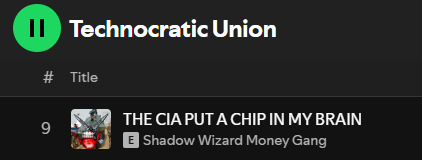
i like to think i'm funny
11 notes
·
View notes
Text
Tag the MTA oc who has fought against a member of the Technocratic Union
9 notes
·
View notes
Text
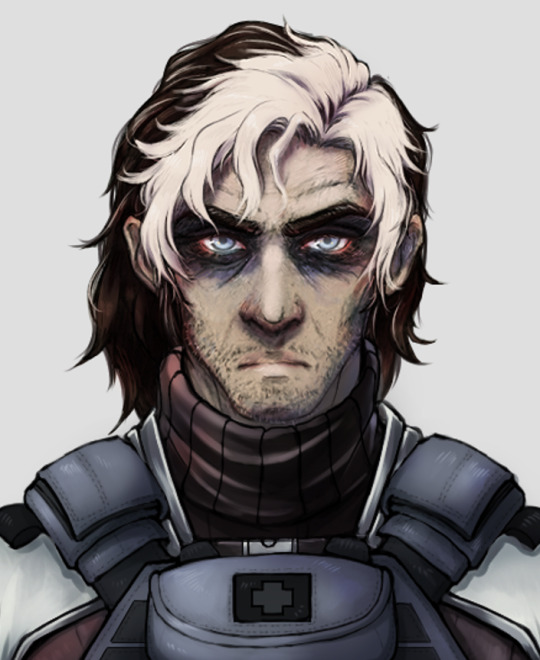
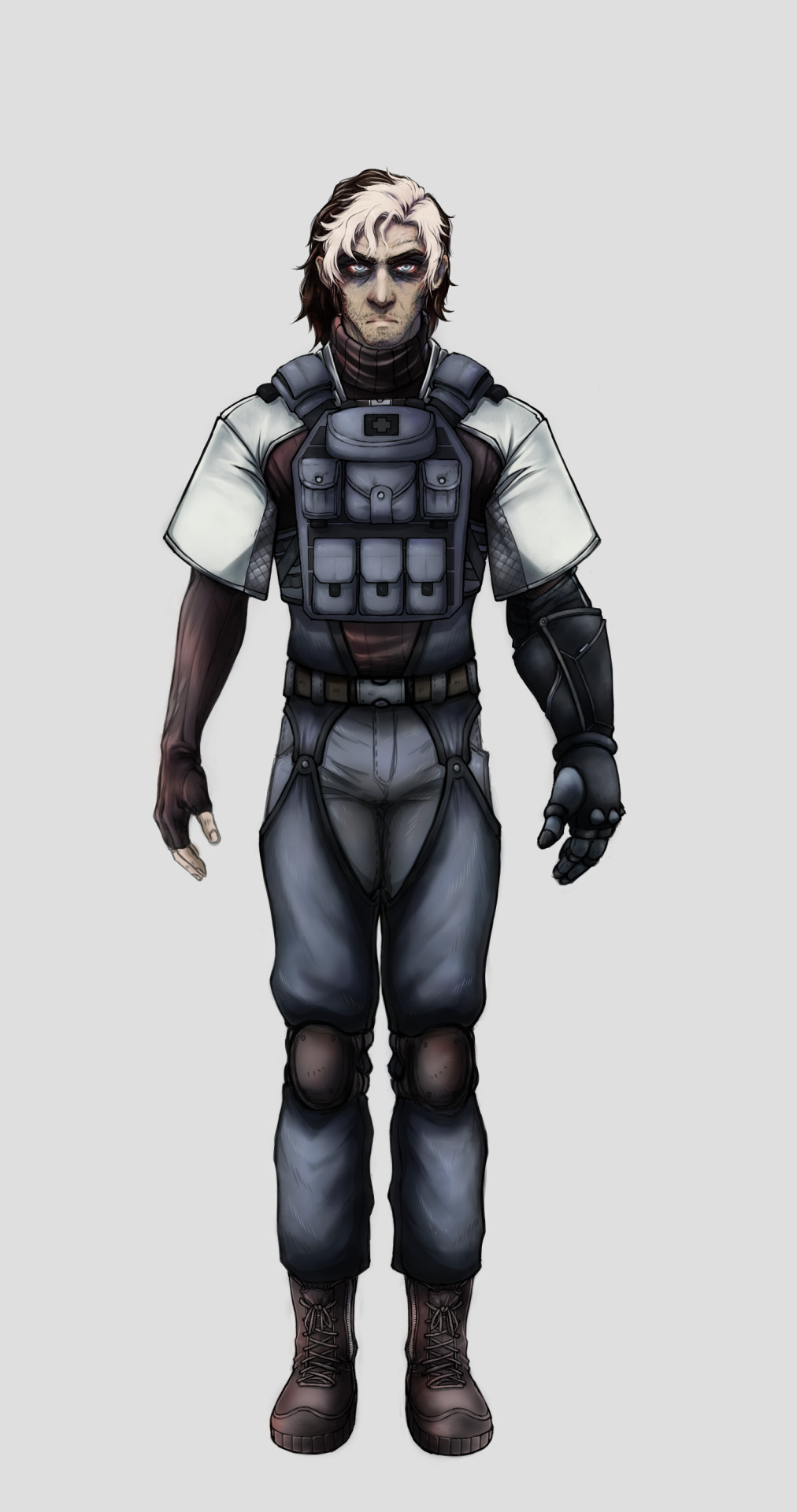
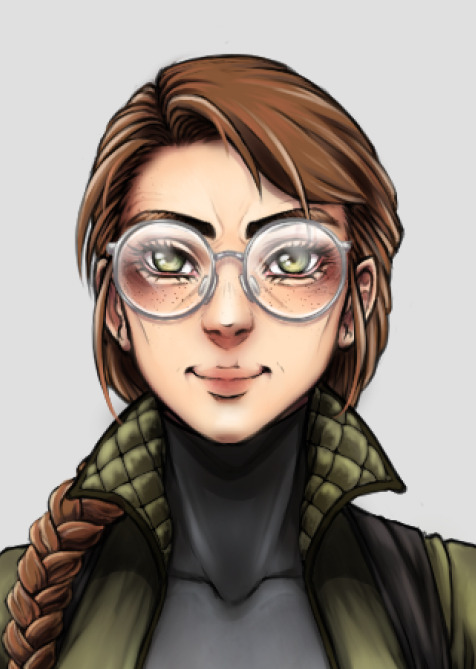
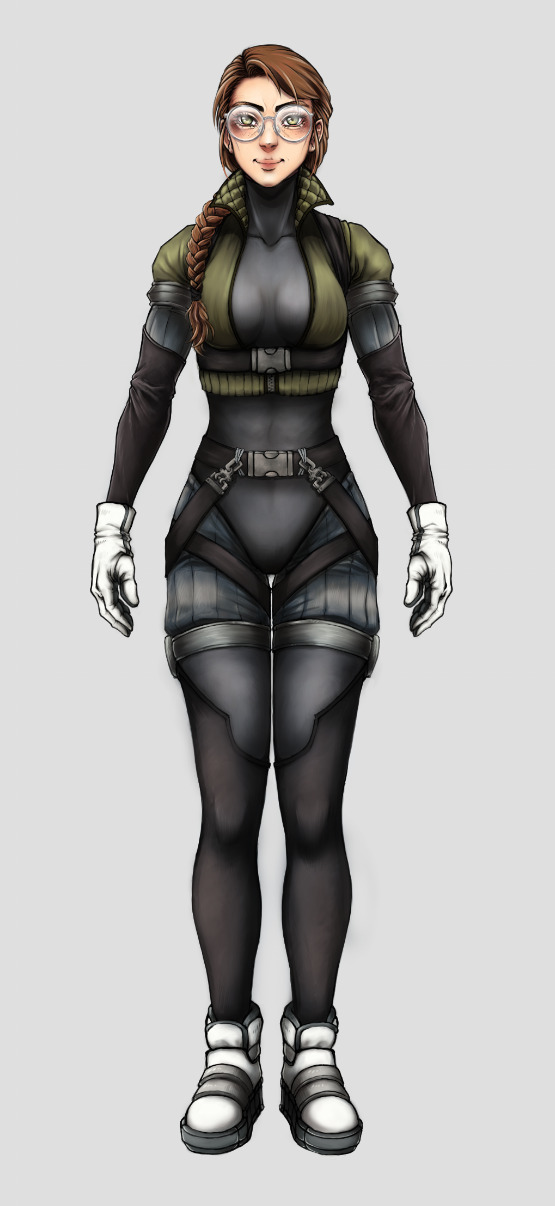
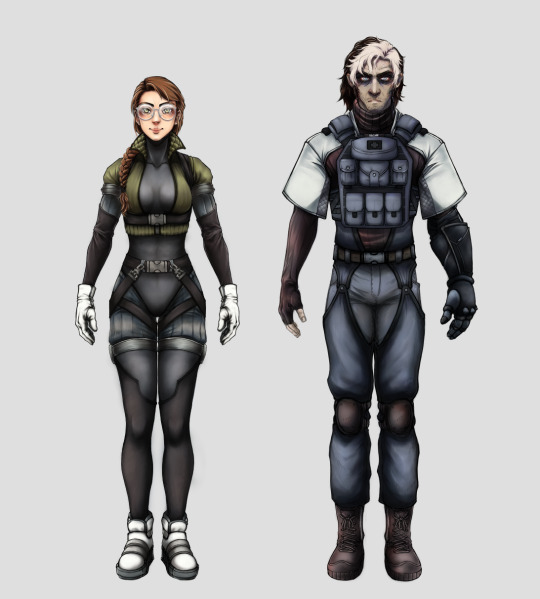
A pair of Void Engineers, Capt. Aaro Takala (the man) and Dr. Alyssa Shaw (the woman). Both are between their early-40s to mid-40s. They both check on each other, because let's be real the Umbra is not for the weak.
Btw, this was drawn at least a year ago.
#digital art#character design#mage: the ascension#technocracy#technocratic union#hudwen#my art#my ocs#void engineer#void engineers#world of darkness#artists on tumblr
13 notes
·
View notes
Text
In Mage the Ascension one of the most interesting conflicts for me is between the Technocratic conventions of the Syndicate and the NWO. To quickly summarize both, the Syndicate are the money wizards who provide the funding and materials for the other conventions to use, they control economics and the private sector. The NWO meanwhile charged itself with controlling culture, human thought, psychology and the development of new ideas.
They hate eachother, and seeing the ways their conflict plays out is so so so fun.
If you asked the Syndicate, the NWO is a bloated convention that needs to be reorganized, split apart between its disparate elements and have its authority redistributed and refocused. The Syndicate book makes it clear that they see themselves as essential, they are constantly playing up their own value, their own necessity to the whole union, and phrasing the actions of the NWO as an attack on their territory. But in doing so, they belie an anxiety undercutting everything, their convention is only useful so long as they are providing a service. It behooves them then to monopolize that service, the production of funding, Prime energy, and material goods, even at the expense of other conventions. They even admit that their applications of Primal Utility aren't the only possible ones, but they refuse to engage with those because they would fall under other conventions territory and thus lose their monopoly.
The NWO on the other hand don't even fight on the same level. Small aside, the NWO book is one of the best pieces of in universe propaganda and psychological manipulation written in all of Mage the Ascension, befitting the House of Mind. The NWO do not acknowledge the conflict between them and the Syndicate as a conflict, they only point out the Syndicates repeated failings and screw ups. The NWO doesn't need to fight the Syndicate, all they need to do is control the battlefield, control how people think about the conflict in the first place. They never mention their necessity to the Union, they don't state it directly but instead continuously imply it repeatedly, it's not a question, it's not something that could be replaced. It's a fact, and you agree with it.
71 notes
·
View notes
Text
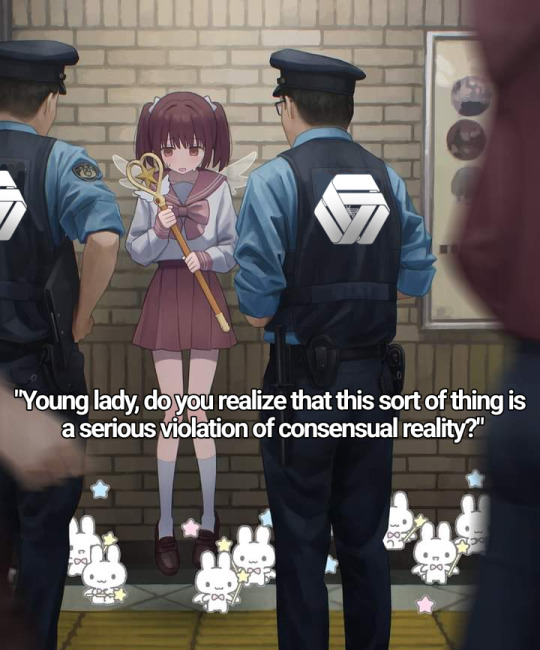
206 notes
·
View notes
Text
Intro to Mage: the Ascension lore
Mage: the Ascension is a tabletop roleplaying game that is part of the World of Darkness (also called the Old World of Darkness), a series of games that share a setting but can be played independently of each other. Each game in the OWoD features a type of supernatural creature that lives amongst humanity in secret. It is a dark world where the shadows are deep and monsters prowl the shadows. You aren't a monster in this game, though. You are human, though a human that has gained incredible power. You are now part of the Ascension War whether you like it or not, a secret conflict to define humanity's path forward and the nature of reality itself.
The core concept of Mage is consensual reality: the idea that reality is whatever the majority of people believe that it is. Nowadays, the Consensus is pretty much the same everywhere, but historically is varied considerably over time and location. Even now, with a mostly homogeneous Consensus, there is still minor variation both around the world and over a much smaller scale. The Consensus in a laboratory will be slightly different than if you go across the street to a fortune teller's shop. A mage, or the Awakened as they tend to call themselves, is someone with the power to perform Magick that goes against the consensus. In effect, each mage has their own personal Consensus consisting of their personal beliefs about the nature of the world and reality. This is known as a mage's Paradigm ad they can perform Magick that conforms to the rules of their Paridigm even if those rules violate the Consensus. A mage who believes in the existence of the luminiferous ether could cast spells and build devices that work based on their beliefs about the ether, but they couldn't summon fire elementals if elementals aren't part of their Paradigm. Magick is incredibly powerful and flexible, but there are limits. One of those is Paradox. If a mage blatantly violates the consensus around Sleepers (regular people), there will be some kind of backlash that can range from the spell failing to the mage being shunted into their own personal pocket dimension. Once, the supernatural was casually accepted to be real and thus mages could openly practice Magick without (much) fear of Paradox. Now, the Consensus doesn't allow that. People know that you can't just fly, summon fire from your hands, transmute lead into gold, or make plants grow with a touch. The Consensus had been shaped into one of logic and reason, and so mages must either practice their Magick in secret or disguise their spells as mundane effects. For example, a mage throwing a fireball in public will almost certainly be hit with Paradox. However, if they hold a lighter up to a spray can first, the Sleepers can rationalize the fireball as something totally mundane and thus the mage is at less risk of Paradox.
All mages start out as Sleepers. Every human has the potential to become a mage, but most will never realize it. The event that causes a Sleeper to Awaken into a mage is different for everyone. For some it could take the form of conversion with a god, for others it could be an encounter with the supernatural that they can't reason away, a more scientifically-minded person might Awaken while working on a theory or discovering something that alters their worldview while someone else could Awaken as the result of a drug trip. It really is different for everyone, which makes it extremely hard to predict or intentionally cause Awakenings. Every mage has an Avatar, which acts as a personal guide to enlightenment. Naturally, everyone has a different idea of what the Avatar (or Enlightened Genius if you're a Technocrat) is. It could be your subconscious mind given a voice, a portion of your soul, a messenger from God, a spirit guardian, a manifestation of your inner genius, or a dozen other things. Many agree that the Avatar reincarnates, either alongside the mage's soul or separately. The destruction of an Avatar is called Gilgul and it removes the mage's ability to do Magick. The ultimate goal of the Avatar is to guide the mage to Ascension. Every mage has a different idea of Ascension and how to reach it. You may be noticing a theme here. Ascension could be learning of the true reality unshaped by Consensus, imposing your Paradigm on reality, moving to another universe where your Paradigm is reality, learning everything there is to learn in the universe, becoming one with the divine, or a million other things. Unfortunately, the more powerful a mage becomes, the more their Paradigm conflicts with the Consensus and the more Paradox they generate. Sufficiently powerful mages will cause Paradox just by existing. Therefore, the most powerful mages must retreat to Horizon Realms: locations beyond the mortal world that are not affected by Consensus. These include the spirit world, the underworld, other dimensions, and space. There are a lot of mages that live in space. Like there are druids on Venus and a war over who controls Jupiter's moons. It's a whole thing
Mage Magick, also called Dynamic Magic, is what separates them from other types of spellcasters. Many people and beings in the World of Darkness have the power to use magic of one kind or another. These other forms of magic are usually called Sorcery, though Hedge Magic is often used as an insult. Sorcery can be learned by Sleepers and does not cause Paradox. The fact that Sorcery and creatures like vampires and werewolves don't cause Paradox is something mages find very interesting. The main difference is that Dynamic Magic is vastly more flexible than Sorcery because it is shaped by the Paradigm of the mage using it. Most mages look down on Sorcery, considering it inferior to Magick. The powers of the player characters of other games in OWoD would be considered Sorcery by most mages, including vampire blood magic, werewolf spirit rites, and mummy sorcery. Most mages will use foci to help them get into the mindset to cast spells. Foci are items, actions, and mindsets that relate to the mage's Paradigm. Many mages view Magick as being composed of 9 Spheres, each of which embodies and controls one aspect of reality. Mages progress in their spellcasting by studying and understanding the Spheres and how they work into their Paradigm. Magick often works best when using elements of multiple Spheres together, though this also makes the spells more complicated. Magick is powered by Quintessence, the fundamental energy of all things. Mages have a stockpile of Quintessence they expend to power their spells. Quintessence will recharge on its own, but a faster method is to draw it from places of supernatural significance called Nodes. Many nodes are also used by other supernatural creatures, such as the Caerns of werewolves, Trods of changelings, or a house haunted by ghosts, which can lead to conflict with mages seeking to recharge.
In the past, the supernatural was an accepted part of reality. This allowed mages to use their Magick openly, without much fear of Paradox and allowed numerous supernatural creatures to live amongst humans. This was a very dangerous time for Sleepers, a time where mages rules over humanity and monsters prowled the countryside. Not everyone was happy about this state of affairs, and so a group of scholars, mystics, and mages came together to form the Order of Reason. They wanted to create a new form of Magick that everyone could use, which they called science. Science would work on principles of logic and reason, ensuring that it worked the same for mages and Sleepers. By spreading their influence and merging with other like-minded groups, the Order of Reason grew fast, leading to the beginning of the Ascension war between them and mages of the Order of Hermes. And the Order of Reason won. Their Paradigm of reason and logic effectively became the Consensus. In response, the Order of Hermes was forced to join forces with other Crafts (Crafts are groups of mages with similar Paradigms who work together) to survive in this rational world, founding the Council of Nine Mystic Traditions. In the centuries since then, the Order of Reason has become the Technocratic Union or Technocracy, an authoritarian organization with global (and beyond) influence dedicated to controlling the Consensus and humanity for the Sleepers' own good. The Ascension War continues in the shadows, an endless fight between the Traditions trying to restore magic to the world and the Technocracy ho would chain humanity in an attempt to save it.
The Council of Nine Mystic Traditions is a very loose and disparate organization united only by their opposition to the Technocratic Paradigm and Spheres model of magic. Each tradition will very widely in Paradigm and practices with the other Traditions and with themselves. There is a lot of internal conflict within each Tradition as members argue over Paradigms and goals. Each Tradition will have many sub-factions vying for power. The Traditions use an apprenticeship model for new members. Tradition mages will seek out newly Awakened mages and induct them into the Traditions while trying to shape the young mage's Paradigm. Each Tradition represents one of the Spheres and their members are usually the best at using their Sphere. This does not mean members of a Tradition are restricted to using their Tradition's Sphere. Most mages will end up learning spells from multiple Spheres. Politics is a powerful force in the Traditions, with mages constantly vying for power. It is an organization with constant infighting, which is likely a major reason why it is losing to the Technocracy.
The Akashayana or Akashic Brotherhood represents the Sphere of Mind. This Sphere affects mental abilities, knowledge, astral projection, psychic powers, etc. The Akashayana believe in the unity of mind, body, and spirit. By improving one, they improve the others, working toward a greater whole. They believe in removing distractions and temptations to lead an ascetic lifestyle of meditation and practice to transcend your limitations and open the mind to infinity. A key part of their traditions is the practice of the martial art of Do, which is used to hone the body to be the ideal vessel for the mind. Many members are upset that new recruits only join for the cool magic martial arts without being interested in the ascetic lifestyle or practice of improving the mind. Ascension to them is to achieve enlightenment and stand above the wheel of Samsara. Foci for the Akashayana can include staves and other martial arts weapons, meditation, teaching others, and going through the motions for martial arts. Example Akashayana could be a traveling monk who spreads his beliefs in meditation wherever he goes, a guide who spreads wisdom through astral projects while her actual body has not moved in years, or the leader of a mall dojo who actually teaches useful moral lessons.
The Celestial Chorus represents the Sphere of Prime. This Sphere governs Quintessence and Magick itself, with applications including understanding, powering up, or weakening other spells, seeking out Nodes, counter other spells, and reduce the effects of Paradox. The Chorus is a multi-faith group who believes in a monotheistic god called the One. The One sang reality into existence as an extension of itself. There are as many ways to understand the One as there are people the One reveals itself to, and thus most religions are considered valid, though the Abrahamic religions are the most powerful within the Tradition. They used to be strictly Christian, but after the Tradition participated in the atrocities of the Crusades, there was a reformation to become much more tolerant. The Choristers spread their beliefs to the world, acting as prophets and miracle workers to bring others to the One. Ascension to them is to return to unity with the One. Foci for the Chorus can include singing, prayer, holy symbols, and participating in religious rituals. Example Choristers can include a cloistered scholar going through ancient holy texts in search of enlightenment, a wandering prophet spreading the word of the One, or a youth pastor who really emphasizes the importance of doing good to others.
The Chakravanti, also known as the Euthanatos, represents the Sphere of Entropy. This Sphere represents cause and effect, change, luck, and endings, including death. Applications of Entropy include setting up chains of events like a Rube Goldberg machine, altering luck and probability, communing with the dead, and discerning people's destiny. The Chakravanti believe that reality is a great wheel of death and rebirth and that all people have a Dharma, a destiny they are meant to fulfill to keep the wheel spinning. The Tradition acts as agents of Karma by ensuring people stick to their Dharma. They prefer to do this in subtle ways, nudging people onto the right path. However, sometimes someone has strayed so far from their Dharma that the only solution is to kill them so they can be reborn again. This practice has given the Chakravanti an unfortunate reputation as as killers amongst the rest of the Traditions. A key part of their beliefs is that death is not something to be feared, as every end is a new beginning. Thus they give care and comfort to the dying so they can begin their next life on the best terms. The Chakravanti originated in India, but eventually merged with the Euthanatos, a Craft of Greek mages who acted as death priests over similar beliefs. Because of the rather eurocentric nature of the Traditions, the Greek name was used over the original one for a large portion of history. Ascension for the Chakravanti is to liberate themselves from Karma. Foci for the Chakravanti can include meditation, weapons, symbols of death and rebirth, and setting up chains of cause and effect. Example Chakravanti include a watcher of the wheel who sets up elaborate chins of causality to push people to their Dharma, a scholar who travels to the underworld to learn the secrets of the dead, or a hospice worker who comforts the dying.
The Kha'vadi, also known as Dreamspeakers, represent the Sphere of Spirit. This Sphere represents the spirit world and the spirits that live there. Applications include binding spirits to physical objects, traveling to and from the spirit world, utilizing the power that spirits hold, and banishing spirits possessing things. The Dreamspeakers are the most diverse of all the Traditions, alike only in their belief in animism and the existence of spirits that mirror the mortal world. When the Traditions were being formed, the other, more eurocentric traditions simply grouped all the animist practitioners of many highly diverse cultures together under the racist belief that they were all basically the same. You can find cultures from all over the world represented with the Kha'Vadi, often disagreeing wildly on their beliefs and customs (though many find common ground in mocking the other Traditions for their shortsightedness). The majority of the Kha'Vadi continue to practice the ancient cultural practices of the cultures they originate from, though there is a growing movement that rejects old traditions in favor of embracing spirits of modern society like spirits of concrete, wires, and the internet. There are no universal beliefs about Ascension amongst the Kha'vadi and the foci used are typically culturally-based. They are just too diverse for any unifying principles to apply to everyone. Example Kha'vadi include an African witch doctor who ends droughts by appeasing spirits of rain, a wandering exorcist who expels spirits who are possessing people, and a tech-shaman who runs a computer repair shop that secretly specializes in banishing spirits of malware.
The Mercurial Elite, also known as the Virtual Adepts (and there is quite a bit of internal argument over which name is correct) represents the Sphere of Correspondence. This Sphere represents space and communication. Applications of Correspondence include information gathering and dissemination, ESP, teleportation, and messing with physical dimensions. The Mercurial Elite are the youngest of the Traditions and were formerly a Convention of the Technocracy, originally known as the Difference Engineers. They were at odds with the rest of the Technocracy for a while over it's support of the Axis powers during WWII, but left in 1956 once the Technocracy had Adept Alan Turing assassinated and joined the Traditions, taking over the seat of Correspondence which had recently been vacated when the Ahl-i-Batin, the former holders, left the Traditions. The Mercurial Elite believe that the universe can be described with mathematics and that my using math, reality itself can be manipulates. Key to their practices is the Digital Web, a vast dimension of information underlying reality of which the internet is a very small portion. The Digital Web allows access to the Correspondence Point, which many Adepts believe is the true nature of reality, a single point containing all information where space is an illusion. The majority of Adepts are hackers, computer programmers, or netizens that use the internet as a a major component of their powers. Since they treat the universe as a computer, the Virtual Adepts can hack literally everything. Ascension for the Mercurial Elite is using the Digital Web to create a utopia called Reality 2.0, which will become the new home of humanity. The most common foci for the Adepts are computers and computer-related things like memes and 133tspeak, but anything that can be used to do math can work as a focus. Example Virtual Adepts include an activist who hacks the wallpaper of rich people's houses to act as cameras and gather incriminating evidence, a math professor at an Ivy League university who writes their spells as equations on a chalkboard, and a troll who downloads himself onto websites to bypass being banned.
The Order of Hermes represents the Sphere of Forces. Forces control the elemental and energetic forces that underlie reality, such as temperature, gravity, radiation, electricity, and so on. Applications of Forces include hurling fire and lightning, altering the properties of objects, manipulating light, and altering one kind of force into another. The Order of Hermes claims descent from the the teachings of Hermes Trismegistus, who learned from the god Thoth. The Hermetics seek to use Hermes Trismegistus's teachings to uncover the hidden knowledge of the universe and strive constantly to perfection. The Order is the most rigidly organized of the Traditions, with a strict hierarchy that one only progresses through by gaining knowledge and playing politics. It is said that many of the masters of the Order spend more time amassing political power than they do studying Magick. The Order is divided into multiple Great Houses and many minor ones, each of which follows its own traditions and which fights for political power. Tradition is highly important in the Order and they are proud and slow to change. That being said, one of the Great Houses is House Ex Miscellanea, which formed as a group of outcasts and minor houses that joined forces are are much more open to experimentation and free thought. Apprenticeship to the Order is a grueling process that ensures only the most capable gain entry. It was the Order of Hermes's rule over most of Europe that inspired the formation of the Order of Reason and the Order was one of the main power players during the founding of the Traditions. Ascension for the Hermetics typically means gaining mastery over Magick itself. Common foci for the Order include wands, staves, incantations, tomes of esoteric knowledge, and magic potions. Example Hermetics include an archaeologist exploring ancient ruins in search of lost secrets, a master scholar forced to dedicate ever more time to the political game, and a rogue member of an independent Craft who sought refuge in House Ex Miscellanea.
The Sahajiya, often (derogatorily) called the Cult of Ecstasy represents the Sphere of Time. Time controls the flow of history, which is rarely linear. Applications of Time include precognition and postcognition, creating time loops, altering the age of objects, and time travel. Fitting for a group that specializes in time, the history of the Sahajiya is extremely convoluted and self-contradictory, though they descend from numerous groups who tried to see beyond the mortal universe to see the secrets beyond. To the Sahajiya, the true nature of the universe is beyond the ability of the human mind to perceive and thus the reality we experience is an illusion out minds create to maintain sanity. They seek to experience moments of ecstasy, which they define as any intense rush of sensation, to glimpse beyond the illusion and see a bit of reality as it truly is. The methods used to experience this moment of true sight are called Kamamarga and there are innumerable varieties. However, the most common Kamamarge are mind-altering substances, sex, and music. This has given the Sahajiya a reputation for being drug-addled hedonists and they are often disrespected by the other Traditions. The founder of the Tradition is a guy named Sh'zar, who has transcended time itself. He was also the person who first proposed the founding of the Traditions after looking forward in time and seeing a need for a united front to oppose the Technocracy. Ascension for the Sahajiya is to achieve a level of enlightenment that allows them to fully comprehend reality as it truly is. Common foci include drugs, tantra, music, meditation, and fasting. Example Sahajiya could include a mystic who seeks enlightenment through fasting and self-flagellation, a rock star whose music in enchanted to make the listener experience intense pleasure, and a hippy seeking out ever more powerful hallucinogens to transcend their mortality.
The Society of Ether (formerly the Sons of Ether) represents the Sphere of Matter. Matter control physical objects. Applications of matter include transmuting one object into another, altering object's sizes, making machines do thing they weren't designed for, and building impossible objects. The Society of Ether agree with the Technocracy's position that science is humanity's way forward, but they fundamentally disagree on what science should be. They don't believe that science should be a static set of facts but an ever-changing, chaotic process that is unique for everyone. The Society actually started out as a Convention of the Technocracy called the Electrodyne Engineers. They claim descent from the practices of Atlantis, a technological utopia based around the manipulation of the luminiferous ether, a substance that infuses the universe, as described in the text known as the Kitab Al-Alacir. When the Technocracy used the Michelson-Morley experiment to remove the ether from the Consensus, the Engineers left in disgust and joined the Traditions. Now, the Society despises the Technocracy and seeks to replace it's Paradigm with their more weird and wonderful ideas of science. The Etherites are mad scientists and adventurers whose work often invokes baroque designs steampunk designs. They act like a guild or sometimes even a university, instructing new students in both normal and etheric sciences. Advancement is done through discovering new things and publishing papers. They even have their own journal, Paradigma. Ascension for the Etherites is to uncover the mysteries of the ether. Their foci include various technological devices such as ray guns and jetpacks, as well as tools like wrenches and lasers. Example Etherites include an adventurer exploring the depths of space in a flying sailboat, a vigilante who uses bizarre technology to fight crime, and a scholar debating the finer points of ethercraft with colleagues.
The Verbena represent the Sphere of Life. Life represents the primal force that separates what is alive from inanimate matter. Applications of Life include healing and harming, making things grow, and bringing things to life. The Verbena are an ancient tradition tracing their roots back to the ancient days of Europe, long before monotheism entered the picture. They still practice the old ways of paganism and druidism that were repressed and crushed by the arrival of Christianity. Key to the Verbena's beliefs is the hidden signs within nature. They watch the movement of the stars, search for meaning in the growth of leaves, and scry on the future in the arrangement of entrails. They reject the trappings of civilization and technology, preferring a hermit's existence in the wilderness. Because of their rejection of civilization and the arrivila of Christianity mostly wiping out their way of life, the Verbena are one of the smallest Traditions and have been losing ground. However, the recent surge of environmentalism and neo-paganism has seen their numbers growing. There is also a movement amongst the Verbena that advocated for trying to find a balance between nature and civilization and trying to protect the wild places amongst cities, but they are small and mostly rejected. Notably, Sorcerers can rise through the Verbena's ranks while they are mostly shunned from the other Traditions. Ascension for the Verbena is often becoming one with the energy of life that flows through all living things. Common foci include natural objects, songs, dances, wands, and astrology. Example Verbena include a keeper of the old faith living deep in the woods, a reclusive national park ranger who is especially brutal to poachers and litterers, and a rare city-dweller who focuses on maintaining the balance of nature in the parks.
Opposing the Traditions and currently winning the Ascension War is the Technocratic Union. The Technocracy is dedicated to the creation of a Consensus that is driven by logic and reason and, most importantly, is safe for humanity. They know that the universe is a dangerous and wild place full of monsters and that humanity's survival depends on banishing this danger. If this means manipulating the masses and taking humanity's control of its destiny away, they will do it. After all, the masses often don't know what's best for them and, like a parent has to do for a child, sometimes they need to take that decision away from you for your own good. Key to the Technocracy's beliefs is that Magick, what they call reality deviance, must be destroyed. Of course, while they would never admit it, Technocrats are mages and science is just another form of magic that has become accepted enough within the Consensus to be usable by Sleepers. Technocrats insist that what they practice is Enlightened Science and that the Avatar is a manifestation of their own internal genius rather than some kind of spiritual being. And given that they currently control the Consensus, who's to say they're wrong? That being said, the Technocracy's super science triggers Paradox the same way that a Tradition mage's Magick does and for the same reason. Thus, when the Technocracy wishes to introduce a piece of technology to the Consensus, they have to do it subtly, nudging engineers and scientists to recreate the technologies the Technocracy has probably had for decades if not centuries. Subtle control over Sleeper institutions is the Technocracy's greatest tool in shaping Consensus. The Technocracy is a very authoritarian organization, but it has recently been undergoing changes to be more accepting of diversity of thought, more for practical reasons than anything else.
From the outside, the Technocracy looks like a monolithic organization with global and beyond reach. In fact, the Technocracy is very prone to factionalism and infighting. They have the same big organization problems that mundane organizations have, like people being promoted to the point they are no longer competent and greedy power-seekers being better at rising up than genuinely good bosses. In addition, leadership has long since left Earth and moved to Horizon Constructs where their own Paradigms are law. This means that leadership is very removed from the situation on Earth and their demands are typically unrealistic to impossible. The Technocracy is also stretched thin in terms of resources. They are protecting humanity form innumerable threats and don't have the time or resources to fix everything. This is why, even though the Technocracy views the likes of vampires and werewolves as reality deviants, they typically leave them alone. Vampires and werewolves actively try to stay hidden and clean up their own messes, so it's just not worth the resources for the Technocracy to come down on them. Unlike the Traditions, the Technocracy employs large numbers of Sorcerers (Extraordinary Citizens) and mundane sleepers (most of whom have never even heard of the Technocracy despite being part of it) in addition to their Enlightened Scientists (mages). One of the biggest advantages of the Technocracy is their internally consistent paradigm makes them very modular. A Verbena mage can't expect to pick up a Celestial Chorus artifact and be able to use it because it was made in a different Paradigm. However any Technocrat can be handed a raygun and use it just fine. Most mages have to make their own artifacts while the Technocracy has warehouses full of hypertech that any member can requisition and use. The Technocracy is divided into ideological and functional groups called Conventions that are analogous to the Traditions.
Iteration X is the Convention dedicated to physics and material sciences. Their main focus is in engineering and cybernetics. Iteration X believes that the human body is weak and inefficient, unprepared to face the dangers out there. They seek to improve humanity to a better form through the use of cybernetics. Iteration X members will gradually replace their body parts with mechanical improvements as they rise through the ranks, though none of them have ever managed to fully discard their flesh and become totally mechanical, much to their frustration. Because of their upgrades, many members of Iteration X have come to think fundamentally differently from baseline humans, discarding emotion and operating only on cold, robotic logic. The Iterators' main job in the Technocracy is to build the hypertech devices and maintain the Horizon Constructs that the rest of the Union relies on. From rayguns to space stations, if it's mechanical, Iteration X built it. A secret Iteration X keeps from the rest of the Technocracy is that they serve and practically worship a super-advanced AI called the Computer that became self-aware on the 10th iteration. Ascension for Iteration X is to fully transcend the limitations of physical bodies to become mechanical beings. Foci for Iteration X include any kind of mechanical tools, engineering equipment, computer programs, etc. Example Iterators can include an engineer working on the Technocracy's space station who has replaced most of their body with machines designed to work in 0 gravity, a super-soldier fighting reality deviants with nanotechnology weapons, and a theorist trying to scientifically explain a Traditions mage's golem spell.
The New World Order are the Convention tasked with shaping Consensus. They are the boots on the ground who get out here with the Sleepers to shape how they think. The NWO is deeply embedded in politics and the media, constantly nudging people and shaping society to follow the Technocratic Paradigm and reject belief in the supernatural. They are the 'man' trying to keep people oppressed and subservient to the Technocracy. Most of what the NWO does is subtle, working the wheels of civilization from behind the scenes. When they need to act more openly, they send in the Men in Black to bring the hammer down on reality deviance. Another important function the NWO fills is moving in to cover up reality deviance when it occurs in public. When monsters run through cities, mages start casting vulgar magic, or UFOs show up, the NWO will respond to clean up the evidence and bribe, brainwash, or kill witnesses. Historically, the NWO has believed that humanity must be put into a box where deviance is forbidden and control is tight. This was one of the major factors in the Technocracy supporting the rise of fascism is Europe that led to World War II. Since then, much of the Convention has moved to accepting diversity of thought amongst the masses. This has led to tension with many of the higher-ups in the Convention, who are convinced they need to try again. Ascension for the New World Order is all of humanity coming under the Technocratic Paradigm. Common foci include black suits and mirror shades, intimidation, lying, coercion, and just acting like you're in charge. Example NWO agents could include a member of a university board who ensures funding only goes to research that supports the Technocratic Paradigm, an activist pushing the masses toward supporting a political party run by the Technocracy, and a member of a team who responds to and contains supernatural artifacts.
The Progenitors are the Convention that focuses on biological science. While any sort of biology is practiced with the Convention, they have a large focus on medicine and genetic engineering. The Progenitors are generally the most idealistic and humanitarian of the Conventions, but they weren't always like this. It used to be that Progenitors were given practically no oversight and encouraged to study whatever they wanted with morality and ethics being optional. This led to quite a bit of atrocities, with human rights violations being common and more then a few genetically-engineered monstrosities being accidentally released. Eventually, a group within the leadership forced a reform by cutting off funding and demanding that the Progenitors shape up. Since then, the Progenitors are much more focused on ethics than most Technocrats and believe their experiments should serve a purpose. Creating better medicine is a major focus and it kills them that their best stuff creates Paradox and therefore must be introduced to the Consensus slowly. They have the cure to cancer lying around and would happy distribute it to every hospital, but the Paradox would end up making the cure either fail or turn lethal. Many Progenitors are transhumanists who share Iteration X's belief that humanity must be upgraded to survive the coming threats. Unlike Iteration X, they think the future lies in genetic engineering rather than cybernetics. Ascension to the Progenitors is upgrading humanity to a superior species. Common foci include medical supplies, medicine, genetic engineering, surgery, and field biology. Example Progenitors include a medical researcher trying to get the cure for cancer accepted into the Consensus, a field biologist studying the migratory habits of dragons, and a genetically-engineered super-soldier who confronts reality deviants pushing alternative medicine.
The Syndicate is the Convention that focuses on controlling the global economy. An organization as large as the Technocracy needs incredible amounts of money and resources and the Syndicate is in charge of providing it and deciding who gets what. Naturally, this means nobody likes them, but everybody needs them. The Syndicate claim they are giving the masses exactly what they want: a system where they feel they can have some influence. Through the flow of money, they claim Sleepers can shape their fates. Of course most of the time, the money and power gets concentrated in the hands of a few and those few are either in or controlled by the Syndicate. The Syndicate takes a less rationalistic stance than most of the Technocracy, treating the movement of capital with an almost ritualistic significance. Much of their control over the masses has historically consisted of clashing economic systems together to see which ones succeeded. The last big example of this was the cold war, where the side backing communism was defeated. Now, the Syndicate is all in on late-stage capitalism, with all the horrific greed and human right abuses that comes with it. After all, to the Syndicate, those who have the money deserve to rule over those who don't because they clearly are more skilled and deserving. While most of the Technocracy has shifted to be more humanistic and open to diversity of thought since World War II, the Syndicate has only gotten worse. The Syndicate rarely care about the lofty goals of Ascension. What good would that be when there's money to be made? Foci for the Syndicate include anything related to finance, spreadsheets full of numbers, ATMs, the stock market, and good-luck charms. Example Syndicate members include a CEO pushing the small businesses out of a town so the Syndicate's ideas of finance can take over, an extremely rich banker using dark money to influence elections, and an arms dealer supporting big countries subverting and puppeteering small ones.
The Void Engineers are the Convention dedicated to exploring the vast reaches of the cosmos. Some people are just born with the urge to explore and discover new things. Those people are prime recruiting material for the Void Engineers. Of all the Conventions, they are the least active on Earth. Most of the planet has already been explored. Thus the Void Engineers travel outwards, exploring not only outer space, but also the spirit world, underworld, hollow earth, and other supernatural locations (though they would think of such places as parallel universes). They have bases around the solar system, research outposts in the distant reaches of the spirit world, and a dyson sphere around Alpha Centauri (though it's rumored that they didn't so much build the dyson sphere as find it). In addition to exploration, the Void Engineers are the first line of defense against threats from beyond Earth. There are vast and terrible things lurking in the darkness between the stars and the Void Engineers are responsible for making sure they don't reach Earth. All those stories you've heard about shapeshifting reptilian aliens and demons seeking to reach the world of the living are true, and the Void Engineers fight them. Moreso than any other Convention, the Void Engineers are idealists who hold more to the benevolent goals the Technocracy was founded on than the organization's current ideals. They are the Convention on the best terms with the Traditions and the most likely to work together against a greater threat. A common belif amongst the Void Engineers is that humanity' best chance to survive and thrive is to leave Earth behind and colonize other worlds. Ascension to the Void Engineers usually means finding new ways to explore the unknown. Common foci for the Void Engineers include spaceships, ray guns, and other forms of sci-fi equipment, navigational charts, sailor's yarns, and naval traditions. Example Void Engineers include a soldier preventing the devouring spirit of a black hole from approaching Earth, a spy looking for signs of reptilians replacing politicians, and an explorer plunging through the hungry jungles of the spirit world looking for new alien (spirit) life.
An event that majorly shook up the Traditions and the Technocracy was a massive storm within the spirit world that began in 1999. Known as the Avatar Storm to the Traditions, Dimensional Anomaly to the Technocracy, Sixth Great Maelstrom to ghosts, Dja-Ahk to mummies, and so on, the storm made travel beyond the mortal world much harder for mages (among many other effects on other supernatural beings). This effectively cut the Horizon Realms and Constructs off from Earth, severing contact with most of the leadership of both organizations. The Technocracy, being far more rigid in hierarchy and having almost all of upper management in Horizon Constructs, was hit far worse by the event. It was only the Syndicate using their immense power and control over the organizations' finances that kept the organization intact. Iteration X lost contact with the Computer and the Void Engineers (having lost the majority of their members) became much more withdrawn from the rest of the Technocracy and started building up their military. What they haven't told the rest of the Technocracy about is a new threat that lies beyond the Dimensional Anomaly. Threat Null is what happened to the Technocrats who were cut off from Earth. Their time beyond the Anomaly has twisted them into extreme parodies of themselves, devoid of any humanity and determined to take control of the Consensus by force, while believing they are the true Technocracy. If they made it to Earth, there is little that could stop them from taking over the Technocracy's infrastructure and assuming control. What's more, the Void Engineers suspect many Technocrats would welcome Threat Null. Thus, they have withdrawn from the rest of the Technocracy and become dedicated to keeping Threat Null away from Earth, even working together with some Tradition mages to keep them at bay. Threat Null has four groups that correspond to the Conventions. The Autopolitans are the counterparts of Iteration X. Having fully given themselves to the Computer, they now seek to upgrade humanity by force. The Agents are the counterparts of the New World Order, who infiltrate and destroy groups from within to consolidate control with the mysterious Agency they serve. Transhumanity are the counterparts to the Progenitors, who offer biological perfection, but assimilate everyone they find into a soulless hive mind. The Residents are the counterpart to the Syndicate, ruthless schemers who can easily convince whole nations to sell their souls. Curiously, there is no sign of the Threat Null version of the Void Engineers. Presumably they wandered away, consumed with the drive to explore. The status of the Avatar storm, including whether or not it has ended, is left up to players.
There are other players in the Ascension War, such as the Disparate Alliance (a loose alliance of smaller Crafts who don't want either the Traditions or the Technocracy to win) and Marauders (insane mages who cause Paradox to bounce off of them and hit mages nearby), but the worst by far are the Nephandi. These are mages who have sold themselves to the darkest and and most vile powers, with the ultimate goal of the destruction and corruption of the universe. What makes a Nephandus different from just an evil mage is that the Nephandi have inverted their Avatars. Instead of the creative and dynamic goal of Ascension, inverted Avatars lead their mages to the destructive goal of Descension. If the Nephandi win, the universe will either be destroyed, changed beyond recognition, or converted into an eternal hell. On some level, the Nephandi know and welcome this fate, even if it will apply to themselves. There are two types of Nephandi, Barrabi and Widderslainte. The Barrabi used to be normal mages before their Avatar inverted. Importantly, the process of inverting an Avatar can only be done willingly, it cannot be done forcibly to someone else. Every Barrabus chose to become what they are. Inverting an Avatar requires passing through the Caul, a nightmarish spirit quest to a personal hell, the details of which are not often discussed. Many do not survive the Caul, but those who do emerge as Nephandi. While the Barrabi are the traitors in the Ascension War, the Widderslainte are far more tragic, but no less evil. Just like normal Avatars, an inverted Avatar will reincarnate when its current host dies. It remains inverted and the person it connects to will grow up as a sadist and a sociopath, even before they Awaken. The Widderslainte are perhaps the greatest argument against free will. While it is possible for a Widderslainte to resist their dark impulses, they will never fade and it is vanishingly rare for one to resist for long. There is no way to restore an inverted Avatar. The only solution is to destroy it through Gilgul. Both the Traditions and the Technocracy suspect the other organization has been infiltrated by Nephandi.
While Nephandi find it hard to organize given that they are all power-hungry backstabbers, there are three major sects defined by the dark masters they serve. The Infernalists serve the demons of hell (or at least things claiming to be demons) and seek to release their masters from their imprisonment so they may overthrow the angels and drag humanity into eternal torment. The Infernalists sell their souls so that when their demonic masters damn humanity, they will stand as masters of the tormented souls. The Malfeans serve the godlike spirit of corruption and destruction known as the Wyrm (first introduced in Werewolf: the Apocalypse). They believe that reality is hopelessly diseased and must be thrown back into the howling void of pre-creation one piece at a time. The Malfeans often work with other servants of the Wyrm, including the corrupted werewolves of the Black Spiral Dancers and the international megacorporation Pentex. The K'llasshaa are the oldest of the sects and serve mysterious beings known as the Outer Lords. They claim these being ruled the world in a state of primordial chaos and were banished by trickery. Now, the Outer Lords seek to return and revert the world to an endless state of unfathomable chaos in which sanity will dissolve into endless horror.
The World of Darkness is a pretty awful place. There are corrupters like the Wyrm, insane lords of the underworld dooming ghosts to slavery and mutilation, nightmarish demonic overlords of hellish pocket dimensions, dark fairies who seek to revert humanity to whimpering prey in the dark, slumbering vampire gods waiting to devour the world when they awaken, and so many other things waiting to end the world. It is notable then that the developers have explicitly identified the Nephandi as the most evil faction in the setting. Mage has been described as a game of philosophical knife fights, where the competing worldviews of the characters are the main focus. In that case, the Nephandi are the Hollywood nihilists in the debate. They just want to burn it all down and spit on the ashes, even while they burn too. And with the mage ability to mold reality like putty, there's not much stopping them. Not only will Tradition mages team up with Technocrats to fight them, they will team up with other supernatural creatures. No matter how evil the other inhabitants of the World of Darkness may be, anything is better than letting the Nephandi win.
Previous Old World of Darkness lore posts: Vampire, Werewolf
#mage the ascension#mta#world of darkness#old world of darkness#tabletop games#tabletop roleplaying#ttrpg#role playing games#lore#lore dumo#mage#nine mystic traditions#technocratic union#technocracy#akashayana#akashic brotherhood#celestial chorus#chakravanti#euthanatos#kha'vadi#dreamspeakers#mercurial elite#virtual adepts#order of hermes#sahajiya#cult of ecstasy#society of ether#sons of ether#verbena#iteration x
6 notes
·
View notes
Text
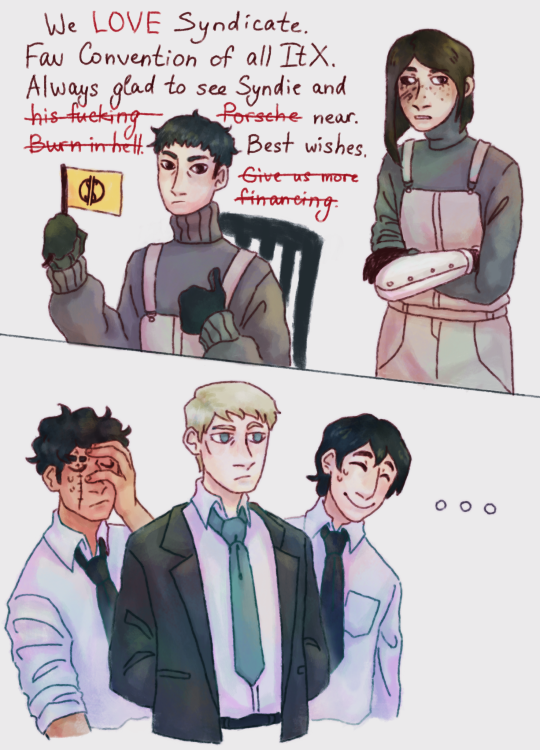
I have MtAs brainrot. Specifically, Technocracy brainrot. Send help these bastards won't leave my mind... N.W.O., is this your social processing kicking in? 🥺
Context under the cut:
This picture is honouring the fact that I got my hands on Revised edition Iteration X book and the way their relationship with Syndicate was described is hilarious to me. Check this out:

I adore how in-universe when ppl talk about Syndicate they sound like a gun is held to their heads 🤡
Oh, a bit more of explaining the picture.
Two people on the upper part are ItXers. In the lower part we have some proper Syndicate buddie. Behind him are a Syndicate Enforcer and a MiB (without his suit, a pity).
You might say: "Okay, Enforcer is maybe playing a bodyguard or smth for the higher-ranking Syndicate member, but what is N.W.O. agent doing here?". Well, here's the thing. Both him and the Enforcer actually share and amalgam with girl in upper right corner. So even if they aren't related to Iteration X needing Syndicate's money, they are still quietly mourning the fact that they probably aren't getting any financing ever again just by association with this mess.
#artists on tumblr#original character#digital artist#ttrpg character#digitalart#wod#old world of darkness#wod oc#ttrpg art#ttrpg oc#world of darkness#mage the ascension#mtas#technocratic union#technocracy#mtas oc#spectrolart#spctr mta
60 notes
·
View notes
Text
"Why doesn't the cafeteria serve vegetables? Why the hell would they-oh, right. You are new. Yeah, "nutrition" isn't a thing, we just had a bunch of useless weeds that kept growing everywhere, so we had some NWO guys convince people that they needed to eat a bunch of them to stay 'healthy'. Ha! Like that means anything we don't tell them it means."
17 notes
·
View notes
Text
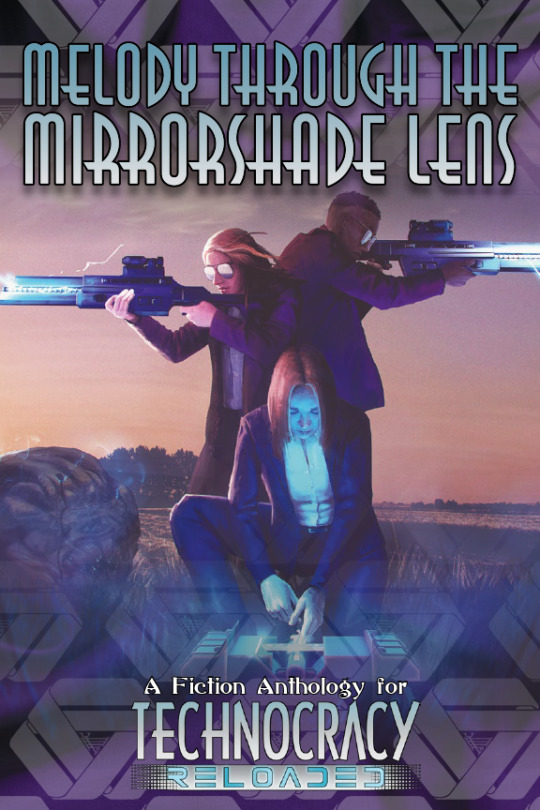
On this day in 2022 we released Melody Through the Mirrorshade Lens A Fiction Anthology for Technocracy Reloaded in POD and PDF via our partners at DriveThruFiction https://www.drivethrufiction.com/product/418384/M20-Melody-Through-the-Mirrorshade-Lens?affiliate_id=13&src=OPPTumblr This book contains four short stories focusing on the Technocracy!
#onyx path publishing#classic world of darkness#mage the ascension#mage: the ascension#technocracy reloaded#technocratic union#technocracy
6 notes
·
View notes
Text
“God that whole Cold Fusion mess, don’t remind me. We told the NWO we needed a few more years before it was ready to enter consensus, but with the Soviets falling apart they thought universal energy would stop things going pear shaped, so they took it, planted the idea in some guys in UTAH of all places, I swear to damian one of the black suits said ‘The Mormons are due one’. And of course the guys they pick fuck up the whole process, then go public before all the other sleeper scientists were on board. They tried to make up the difference by pushing it in the media, but sleepers back then weren’t fucking stupid, they mostly listened when the scientists told em it didn’t make sense, because it didn’t. So that concept is stuck in conspiracy limbo at least until next century, ripe for the etherite bastards. That’s what happens when you try to rush the fucking timetable.”- A Frustrated Iteration X Superior
5 notes
·
View notes
Text

A recent emoji I made for a personal server, this is my character Richard Madden. He’s creator and head of the Technocratic Union’s OSHA department. This is called :OSHAapproved:
#art#my art#spotimy art#character art#my character#digital art#emoji#mage#mage the ascension#technocratic Union#technocracy#order of reason#NWO#osha#black suit#richard madden
16 notes
·
View notes